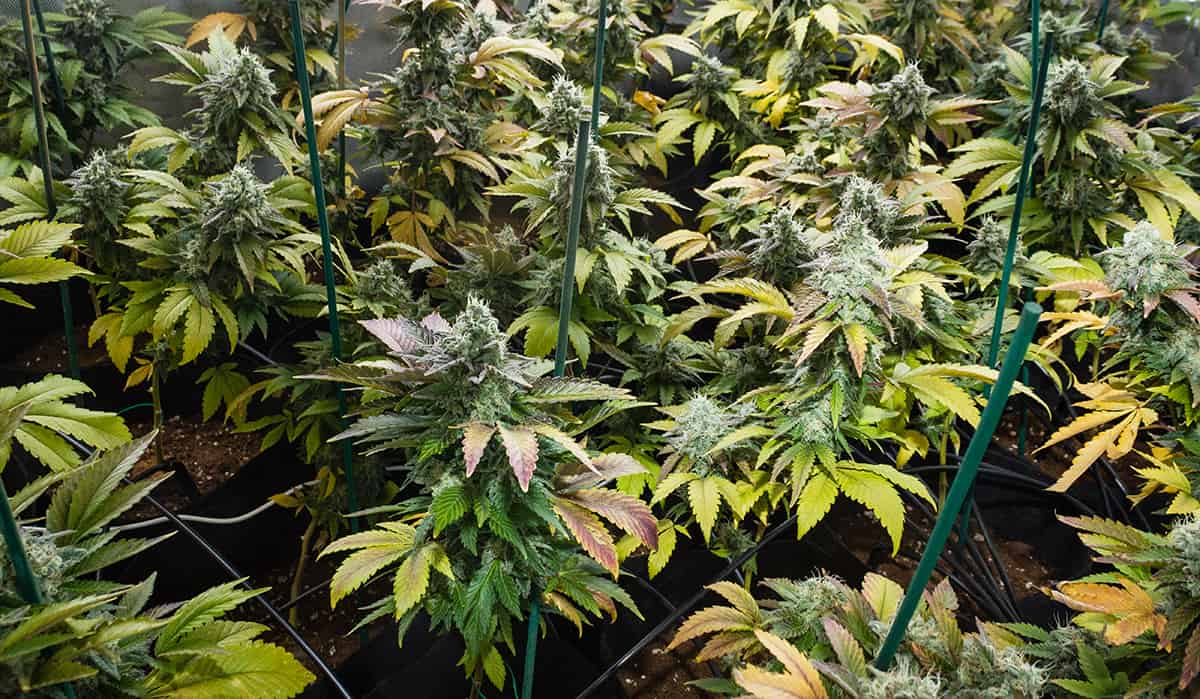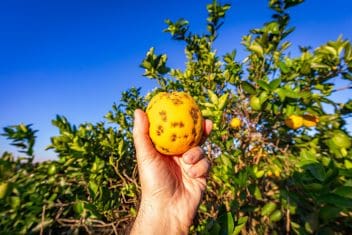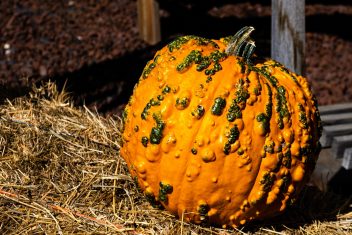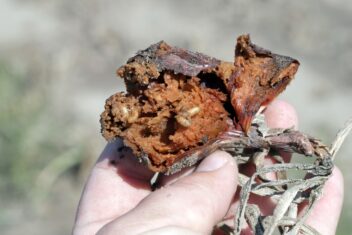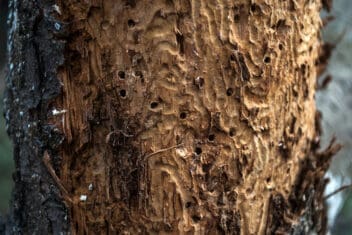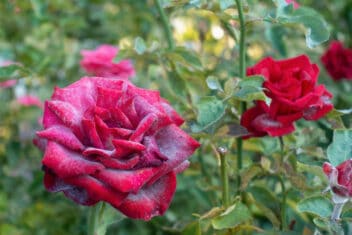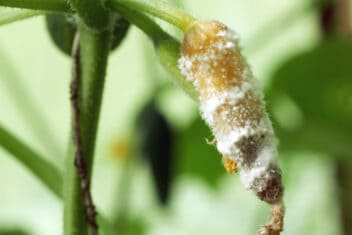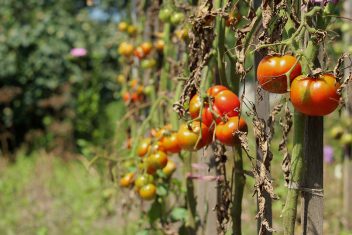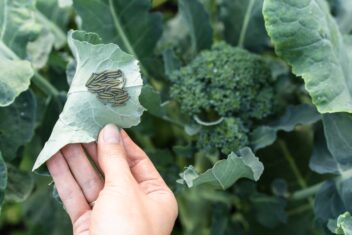No matter what plants you grow, you’ll inevitably have to contend with botanical diseases. As you can imagine, cannabis is no exception. Whether you’re growing these plants for profit or medicine, you’ll undoubtedly come across at least some of the cannabis diseases mentioned below.
Hopefully knowing what to look for can help you identify (and potentially treat) them early.
1. Damping-Off Disease
This can happen to pretty much any plant, but occurs quite frequently with cannabis seedlings. Pythium is a pathogen that thrives in cool, damp soil. It attacks young seedlings and rots their stems so they can’t take up any nutrients.
If your seedlings aren’t growing, or if they’re falling over weakly, check their stems below soil level. Look for brownish stems that are thinner near the roots than they are aboveground. That’s a surefire sign you’re dealing with Pythium.
You can’t save these seedlings, but you can treat the soil and avoid it happening to the next batch. Use warm garlic water as a fungicide and let the soil dry out completely before planting the next batch. Then, only use warm water to moisten the soil. And always, always clean your tools in between use.
2. Fusarium Wilt
Fusarium wilt is another soil-borne pathogen that likes cannabis plants a bit too much. It nestles into the stems’ xylem, preventing them from being able to move nutrients through their sap.
As a result, the leaves will curl and wilt, and the stems will weaken. Before you know it, they’ll be keeling over and dying. At this point, all you can do is burn the plants and treat the soil with a fungicide. Then don’t plant any cannabis or nightshade plants in that soil for at least three years.
3. Downy Mildew
Humid weather, regardless of cool or warm seasonal temperatures, can cause a number of different fungal issues. Check the undersides of your plants’ leaves regularly and look for a grey or white fuzz. You might also see yellow spots on the upper lead surface.
If you find these, then you’re dealing with downy mildew.
While there is a treatment for it, it’s difficult to get rid of completely, and smoking a leaf with mildew on it is dangerous, so you’ll need to destroy the plants immediately. Keep them out of the compost heap so they don’t contaminate any of your other crops.
Instead, you’ll have to burn them. Just don’t stand downwind when burning them—you don’t want to accidentally inhale spores, ashen or not. You can also bag and dispose of the plants.
4. Powdery Mildew
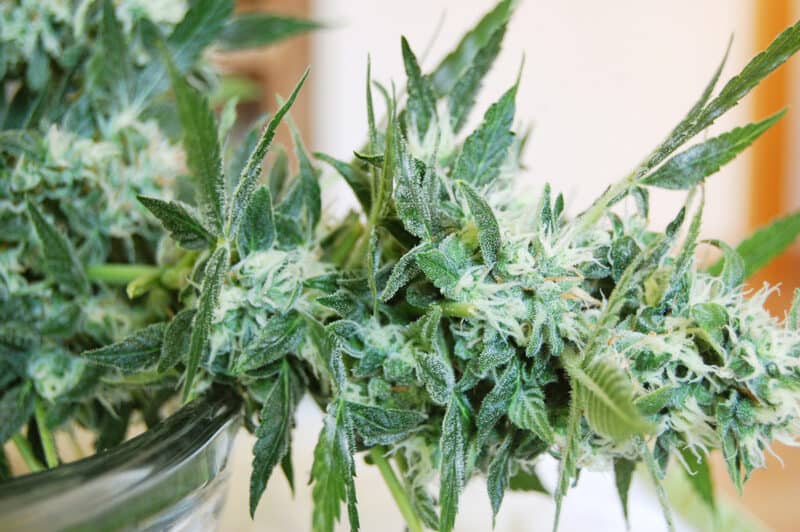
If you’re growing your plants outdoors and you’re dealing with a hot, damp summer, then your plants may end up with powdery mildew. You’ll be able to identify this easily, as it’ll look like your plants have been coated with white velvet.
You might be able to treat this with garlic or neem fungicide if you catch it really early. If it affects more than 5 to 10% of the plant, then you’ll need to tear them up and burn or dispose of them.
5. Gray Mold (Botrytis)
This is more commonly known as “bud rot”. It’ll show up if you’re growing in damp conditions, or if the plants have been watered from above frequently. What happens is that moisture gets trapped inside the buds and can’t evaporate properly.
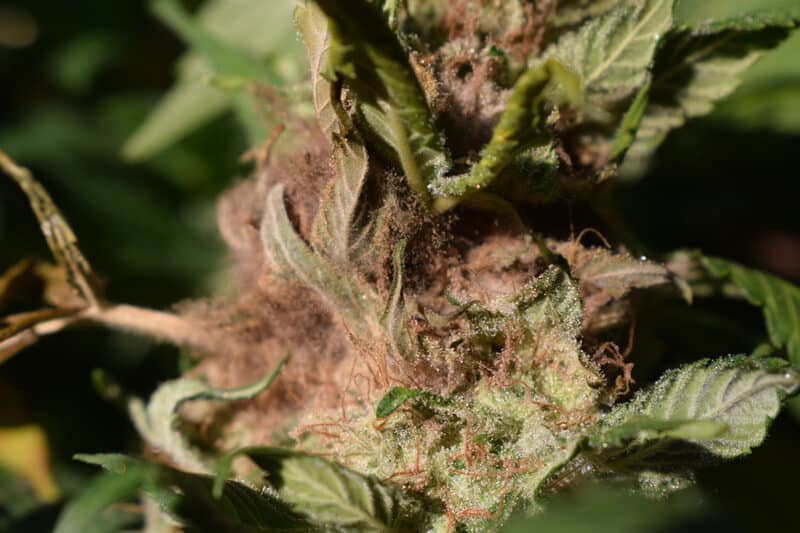
The flower heads may look okay on the outside but will be fuzzy and disgusting when you crack them open.
6. Stem Canker
Check your plants regularly to look for black splotches near the branches. Stem canker is one of those diseases that can attack almost any species but is quite common in cannabis plants.
Much like other fungal issues, there’s little you can do to treat this one. You must destroy the plants before they can pass the pathogen to others.
7. Mosaic Virus
You may have come across this virus in your Cucurbit plants before. Much like cucumber and zucchini mosaic, cannabis mosaic virus is quite virulent and enthusiastic. It appears as mottled gray or white lines on your plants’ leaves, like a stained glass window or mosaic, hence its name.
Be ruthless as you destroy these plants. This virus is incredibly contagious and will spread throughout your garden if you let it. As usual, fire is the best and only way to purge the virus. Then you’ll need to treat the surrounding area with fungicide, and don’t plant anything edible or medicinal there for 5–7 years.
8. Green Algae
Do you see a sludgy sort of green algae creeping across the top of your soil? Yeah, that happens if you’ve been watering your plants too enthusiastically, especially during a heatwave. The algae won’t harm your plants, but you’ll want to let the soil dry out well before offering your plants another drink.
You can avoid this issue by never watering your plants when the soil’s surface is still damp to the touch. Let it dry out enough that you can only feel dampness if you poke a finger 1/2 inch into it.
9. Root Rot
This is more common in hemp plants than marijuana, but can still manifest in cannabis plants. The plants will seem to sicken for no apparent reason until you pull up their roots and examine them. When you do, you’ll find that they’re brownish-black and melting into sludge.
This can be caused by a number of different pathogens, and can’t be treated. It can only be avoided by watering sparingly with small amounts of warm water at soil level. Since this issue only affects individual plants, you don’t have to go on a culling spree when and if you discover it.
Deficiencies
In addition to the diseases mentioned above, your cannabis plants may suffer from a number of nutrient deficiencies. The symptoms can look similar to diseases, but the treatments are significantly different.
10. Boron
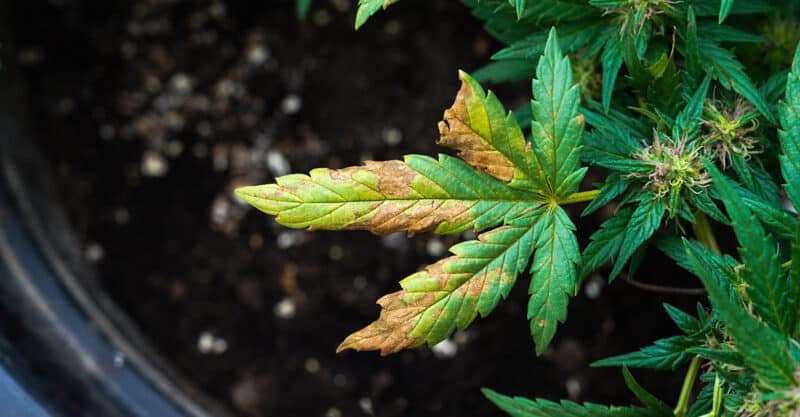
Do you see distorted, yellowed growth at the top of your plants? Are the new growth tips thickened and yellow or brown? Then they might be lacking boron.
This isn’t the most popular element in the periodic table, but it’s quite important for healthy plants. This is because it’s vital for plants’ successful uptake of phosphorus and potassium. If boron is low, then the plants won’t be able to absorb essential nutrients.
11. Calcium
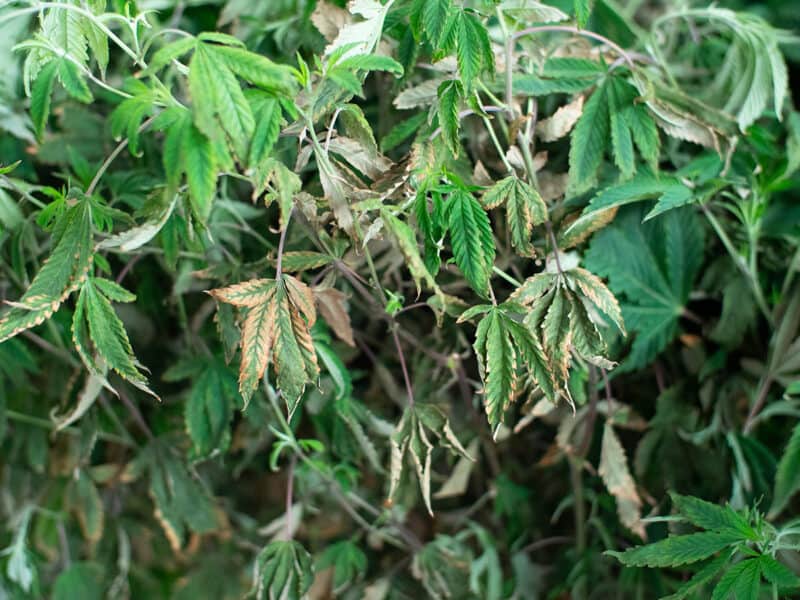
Are there brown or bronze splotches all over your plants’ leaves? Then it’s possible that they’re suffering from a lack of calcium. Be aware, however, that these symptoms can also indicate a number of cannabis pests or diseases.
This can occur if the soil pH is too low, or if the water they’re being moistened with is soft or filtered. It’s usually not an issue of too little calcium in the soil, but of the plant not being able to access the calcium.
To ensure your plants can access the calcium in the soil, make sure you’re giving the right amount of water and check the soil’s pH.
12. Nitrogen Deficiency
Wilted, yellowed leaves are often a big sign of nitrogen deficiency. When cannabis plants have enough nitrogen, the leaves are a glorious intense green hue. In contrast, the lack of it manifests in sad-looking leaves that are pale and sallow.
Treat this by offering your plants a nitrogen-rich compost tea at the root level.
Don’t let these different cannabis diseases prevent you from trying to grow your own plants. After all, you’ll encounter issues no matter what you try to cultivate. Instead, consider them as part of a troubleshooting guide. Many of these problems can be avoided, while others can be easily amended if discovered early. With awareness and diligence, your plants should thrive well in your care.
